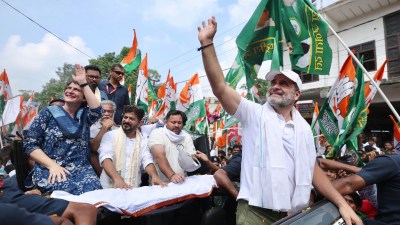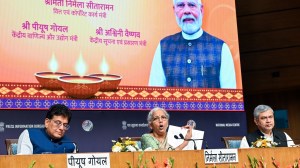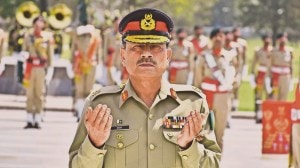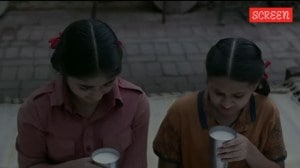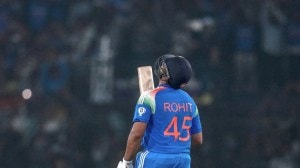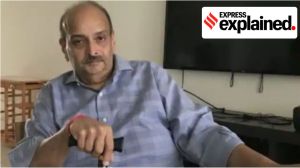Fence is memorial for burnt train
Coach S-6 of the Sabarmati Express, which went up in flames a year ago to put little Godhra on the world map, no longer draws inquisitive cr...

Coach S-6 of the Sabarmati Express, which went up in flames a year ago to put little Godhra on the world map, no longer draws inquisitive crowds. And the station itself wears a ghost look: some major trains streak past in the morning and very little happens thereafter.
This is the price Godhra paid for the carnage. ‘‘No one comes here anymore. They are all afraid the police will book them.’’ Ahmed should know. One of the few licensed vendors, he says the riots sent everyone packing, including scores of unauthorised vendors.
The authorities still think the station’s a dangerous place. So there are some changes underway. A 200 metre stretch will be the main entrance, fenced on the station side by a 15-foot high railing and by a slightly lower railing on the other side.
The authorities think this will make the passengers feel secure though this stretch is barely 100 feet from the existing entrance on the Signal Falia side. This was where the mobs came from a year ago.
All that the new entrance will probably do is provide direct entry to the station. ‘‘It will be easy to loot passengers on the lonely stretch and bolt before the police arrive,’’ says a Muslim rickshaw-puller, extremely unhappy with the new arrangement. His grouse: the whole thing makes it look as if the Muslim locality is where the killers live. Also coming up is a 20-foot high wall, stretching half a kilometre from the station entrance right up to A-Cabin where the train was attacked. But the pace of work has been slow, the station accessible from all sides.
At Signal Falia, residents tell you that the media heaped notoriety on them. ‘‘Only a handful were involved but the entire locality has been given a bad name,’’ complains Ishaq.
After the February 27 incident, there was little violence in Godhra town though villages and towns elsewhere in Gujarat went up in flames. One reason why the town remained peaceful was the immediate clamping of curfew, deployment of army by evening and night curfew for months together. But there’s another reason why policing was simpler here: there’s a clear division of Muslim and Hindu localities. A year ago not many knew how to get to Godhra. Says an HDFC employee, ‘‘I used to have a difficult time explaining the route to my colleagues in Vadodara. Now they all know it. Godhrawallah aaya, they chorus.’’ On Prabhadevi Road which is a Hindu locality, the owner of a cyber cafe makes no secret of his feelings: ‘‘Kaun bolta hai Godhra badnaam hua, hamara shahar to famous hua (who says Godhra has been maligned, we have become famous).’’
Others echo his sentiments. Former MP Gopal Solanki maintains ‘‘the notoriety is not from the Hindu side.’’ He blames the Muslims for the trouble and says ‘‘they should calm themselves, they are the ones who torched the train.’’ BJP worker Kakul Pathak thinks ‘‘Godhra upto date chal raha hai (Godhra’s caught up with the times). Jo hua bura hua but abhi sab kuch achha chal raha hai (whatever happened was not correct but now things are okay).’’
A year after the riots, everyone’s saying things are back to normal. But in their clearly demarcated localities, Hindus and Muslims nurse their thoughts, the wounds still fresh.
A year’s passage has not been enough to shut out memories of the the trail the burning train left behind.



- 01
- 02
- 03
- 04
- 05


